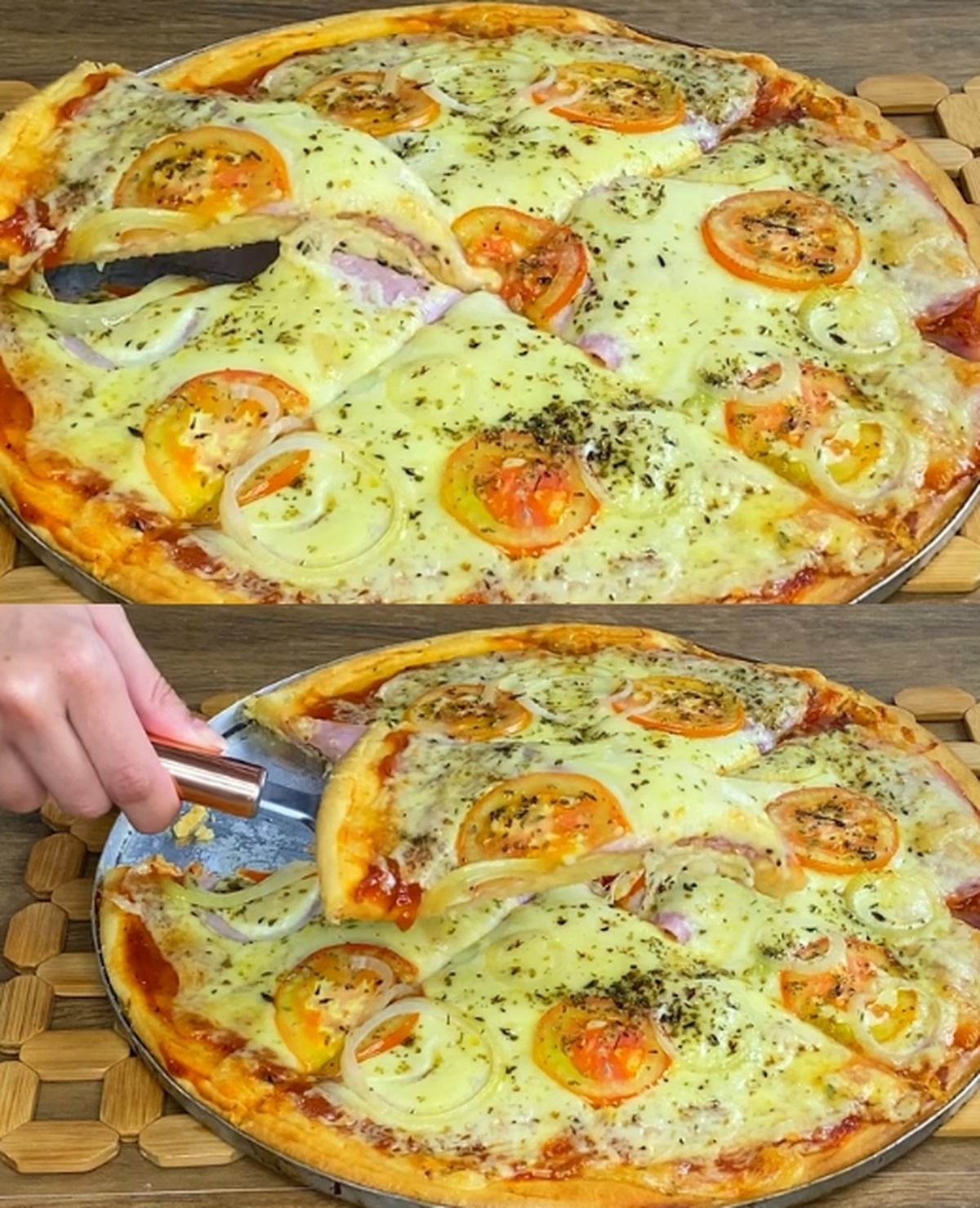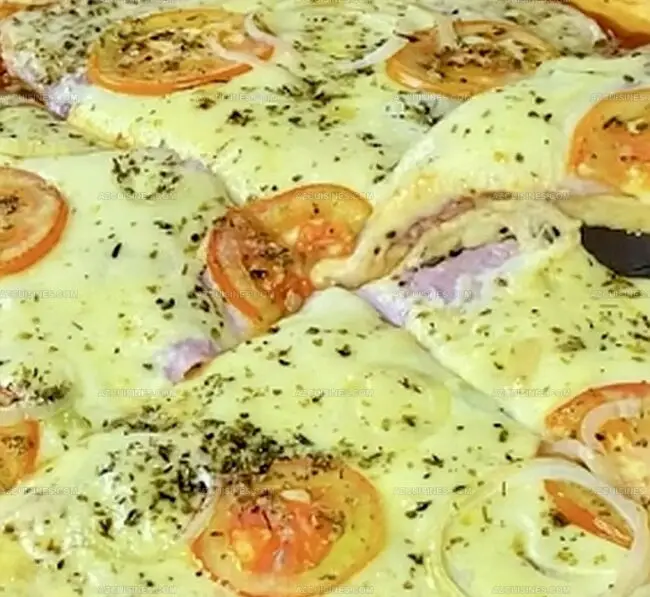The Fluffiest Homemade Blender Pizza Recipe Ever Whipped Up
Crafting a delectable blender pizza from scratch sparks culinary creativity in unexpected ways.
Kitchens buzz with excitement when simple ingredients merge into something extraordinary.
Smooth blender techniques make dough preparation surprisingly straightforward and enjoyable.
Crispy crusts and personalized toppings await your culinary adventure.
Home chefs discover how effortless pizza making can become with minimal equipment.
Fresh ingredients transform an ordinary meal into a memorable dining experience.
You’ll love how quickly this recipe comes together with just a few smart moves.
Why Homemade Blender Pizza Is Crazy Easy
Homemade Blender Pizza—What You’ll Toss In
Base Ingredients:Leavening Agents:Topping Ingredients:Fast Steps For Homemade Blender Pizza
Step 1: Fire Up The Oven
Crank your oven to a toasty 180 degrees Celsius (356 degrees Fahrenheit) and get ready for pizza magic.
Step 2: Blend The Liquid Magic
Toss these goodies into your blender:Blast everything together for one solid minute until super smooth.
Step 3: Create Dough Wonderland
Gradually dump wheat flour into the blender and mix until the mixture transforms into a silky, dreamy pizza dough.
Step 4: Prep Your Pizza Stage
Grab your pizza pan and give it a quick oil massage, then dust lightly with flour to create a non-stick surface.
Step 5: Shape The Pizza Base
Pour your blender dough into the pan and spread it out evenly like you’re creating an edible canvas.
Step 6: Partial Bake The Foundation
Slide the pizza base into the hot oven and pre-bake for 15 minutes until it starts looking golden and promising.
Step 7: Dress Up Your Pizza
Pull out the partially baked crust and get creative with toppings:Sprinkle some oregano and drizzle olive oil for extra flavor punch.
Step 8: Final Baking Brilliance
Return the pizza to the oven and bake another 15 minutes until cheese becomes irresistibly melted and bubbly.
Top Tips For Better Homemade Blender Pizza
Flavor Combos To Try With Homemade Blender Pizza
Sides That Play Nice With Homemade Blender Pizza
How To Store Homemade Blender Pizza Without Losing Crunch
Homemade Blender Pizza—Your FAQs, Solved
Yes, you can substitute wheat flour with all-purpose flour or gluten-free flour alternatives. Just ensure the consistency remains smooth and pourable.
A standard blender works fine. The key is to blend ingredients thoroughly until the mixture is smooth and well combined.
Yes, you can prepare the pizza dough in advance and store it in the refrigerator for up to 24 hours before baking. Just cover it tightly and let it come to room temperature before spreading in the pan.
Pre-baking helps create a crispier crust and ensures the base is fully cooked. It’s an important step for achieving the right pizza texture.
Print
Homemade Blender Pizza Recipe
- Total Time: 50 minutes
- Yield: 4 1x
Description
Crafting “blender pizza” brings Italian culinary magic straight to home kitchens with minimal effort and maximum flavor. Quick mixing techniques and simple ingredients combine for a delightful meal you can enjoy without complex preparation.
Ingredients
Flour and Leavening:
- 2 cups wheat flour
- 1 tablespoon yeast
Base Liquids:
- 2 eggs
- 1 cup milk (240 milliliters)
- 1/2 cup oil (120 milliliters)
- 1 tablespoon salt
Toppings:
- 1 sachet tomato sauce
- ham
- cheese
- tomato
- oregano
- 1 drizzle olive oil
Instructions
- Activate the blender to mix eggs, oil, milk, salt, and yeast for 60 seconds, creating a uniform liquid base.
- Gradually introduce wheat flour into the blender, processing until the mixture transforms into a smooth, consistent dough.
- Generously coat a pizza pan with oil and lightly dust with flour to prevent sticking.
- Transfer the blended dough into the prepared pan, using a spatula to distribute evenly across the surface.
- Position the pizza pan in a preheated oven at 180 degrees Celsius for 15 minutes, allowing the base to develop initial structure and firmness.
- Extract the partially baked dough and immediately spread tomato sauce across the entire surface.
- Strategically arrange ham, cheese, and tomato slices over the sauce, ensuring balanced coverage.
- Sprinkle dried oregano and drizzle olive oil for enhanced flavor complexity.
- Return the pizza to the oven, continuing baking at 180 degrees Celsius for an additional 15 minutes until cheese melts and edges turn golden brown.
- Remove from oven, let rest for 3-5 minutes to allow toppings to set, then slice and serve immediately.
Notes
- Swap wheat flour with gluten-free alternatives like almond or chickpea flour for those with gluten sensitivities.
- Enhance dough’s texture by letting it rest for 10 minutes after blending to allow flour to absorb liquid and develop better consistency.
- Customize toppings by using plant-based cheese and vegetarian protein options like tofu or tempeh for a meat-free version.
- Control blending time carefully to prevent overworking the dough, which can make the pizza base tough and dense.
- Prep Time: 20 minutes
- Cook Time: 30 minutes
- Category: Lunch, Dinner, Snacks
- Method: Baking
- Cuisine: Italian
Nutrition
- Serving Size: 4
- Calories: 350
- Sugar: 2 g
- Sodium: 700 mg
- Fat: 20 g
- Saturated Fat: 3 g
- Unsaturated Fat: 15 g
- Trans Fat: 0 g
- Carbohydrates: 35 g
- Fiber: 2 g
- Protein: 10 g
- Cholesterol: 70 mg




Truc Tran (Kris)
Senior Food Editor
Expertise
Home Cooking, Meal Planning, Recipe Development, Baking and Pastry, Food Editor, Cooking-video Maker, Vietnamese Food Evaluation Expert
Education
Truc Tran (Kris), an experienced food writer and editor, is great at exploring and describing global cuisines, from simple street food to fancy dining. In her writing, she skillfully mixes different flavors, cooking methods, and culinary traditions, showing the unique character of various cultures through their food and drinks. On azcuisines.com, Kris highlights her knowledge, especially in Asian cuisine and worldwide traditional dishes.